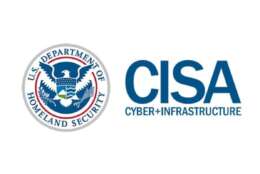Cybersecurity
- Cybersecurity labeling for smart devices aims to help people choose those less vulnerable to hacking
The Biden administration and major consumer tech players are launching an effort to put a nationwide cybersecurity certification and labeling program in place. The program announced Tuesday is to help consumers choose smart devices that are less vulnerable to hacking. Officials liken the new U.S. Cyber Trust Mark initiative to the Energy Star program, which rates appliances’ energy efficiency. The initiative will be overseen by the Federal Communications Commission. Industry participation is voluntary. Amazon, Best Buy, Google, LG, Logitech and Samsung are among industry participants. The labels are for products including baby monitors, home security cameras, fitness trackers, TVs and smart climate control systems. The labels could be ready by next year.
July 18, 2023 -
Bills to modernize cybersecurity hiring, broaden AI training and streamline regulatory documents advance out of the House Oversight and Accountability Committee.
July 17, 2023 -
A purpose-built, on-premises collaboration solution gives your organization a secure environment to centralize the technology tools, content and communications needed to respond to and audit any incident that threatens your mission.
July 17, 2023 -
In January 2022 the Office of Management and Budget published its M-22-09 memorandum on zero trust that mandated compliance with specific goals by the end of fiscal 2024.
July 14, 2023 -
Marine Innovation Unit expands its staff as it takes on more projects and moves toward full operational status.
July 13, 2023 -
The White House on Thursday released an implementation plan for its National Cybersecurity Strategy. The plan outlines 65 high-impact initiatives agencies must meet to stay ahead of emerging threats, and sets a timeline to complete those goals.
July 13, 2023 -
As technology evolves and becomes more complex, so do the techniques of malicious actors looking to compromise systems and steal sensitive data.
July 13, 2023 -
U.S. officials say state-backed Chinese hackers foiled Microsoft’s cloud-based security and hacked the email of officials at multiple U.S. agencies that deal with China ahead of Secretary of State Antony Blinken’s trip to Beijing last month. The surgical, targeted espionage accessed the mailboxes of a small number of individuals at an unspecified number of U.S. agencies and was discovered by the State Department. Officials said none of the breached systems were classified. The hack was disclosed late Tuesday by Microsoft, which said email accounts were haced at about 25 organizations globally beginning in mid-May. A U.S. official said the number of U.S. organizations impacted was in the single digits.
July 12, 2023 -
CISA says a federal agency was only able to detect the infiltration of its email accounts because it had access to Microsoft's "enhanced" logging capabilities.
July 12, 2023 -
SecOps teams must be able to determine what is blatantly spyware. The software is probably sending out specific information and capturing data. All this type of data — application, network and device information — must be correlated and analyzed for a better understanding of what’s going on within the entire IT infrastructure.
July 12, 2023 -
Agency spending on blockchain is a tiny fraction of total technology spending. But it's important and growing, according to analysis by Deltek, a company focused on delivering software and information solutions.
July 11, 2023 -
Contractors will, somehow, be living under it, and there's still time to comment on it: The revision to NIST special publication 800-171 on protection of controlled, unclassified information. That's not the only cyber policy affecting contractors.
July 11, 2023 -
As a response to the spate of high-profile software supply chain attacks, including SolarWinds and Log4J, President Biden’s cybersecurity Executive Order 14028, released in 2021, signaled the beginning of the administration’s focus on software supply chain security. The executive order demonstrated the administration’s serious commitment to the issue and made clear to software companies that they had a vital role in maintaining security.
July 10, 2023 -
More than half of all federal agencies now automatically report into the CDM dashboard.
July 07, 2023 -
The White House’s National Cybersecurity Strategy is primarily written for and designed to guide federal government officials. Yet the latest release of the strategy is remarkable for the commitments it makes to the private sector on a range of cybersecurity issues.
July 06, 2023











